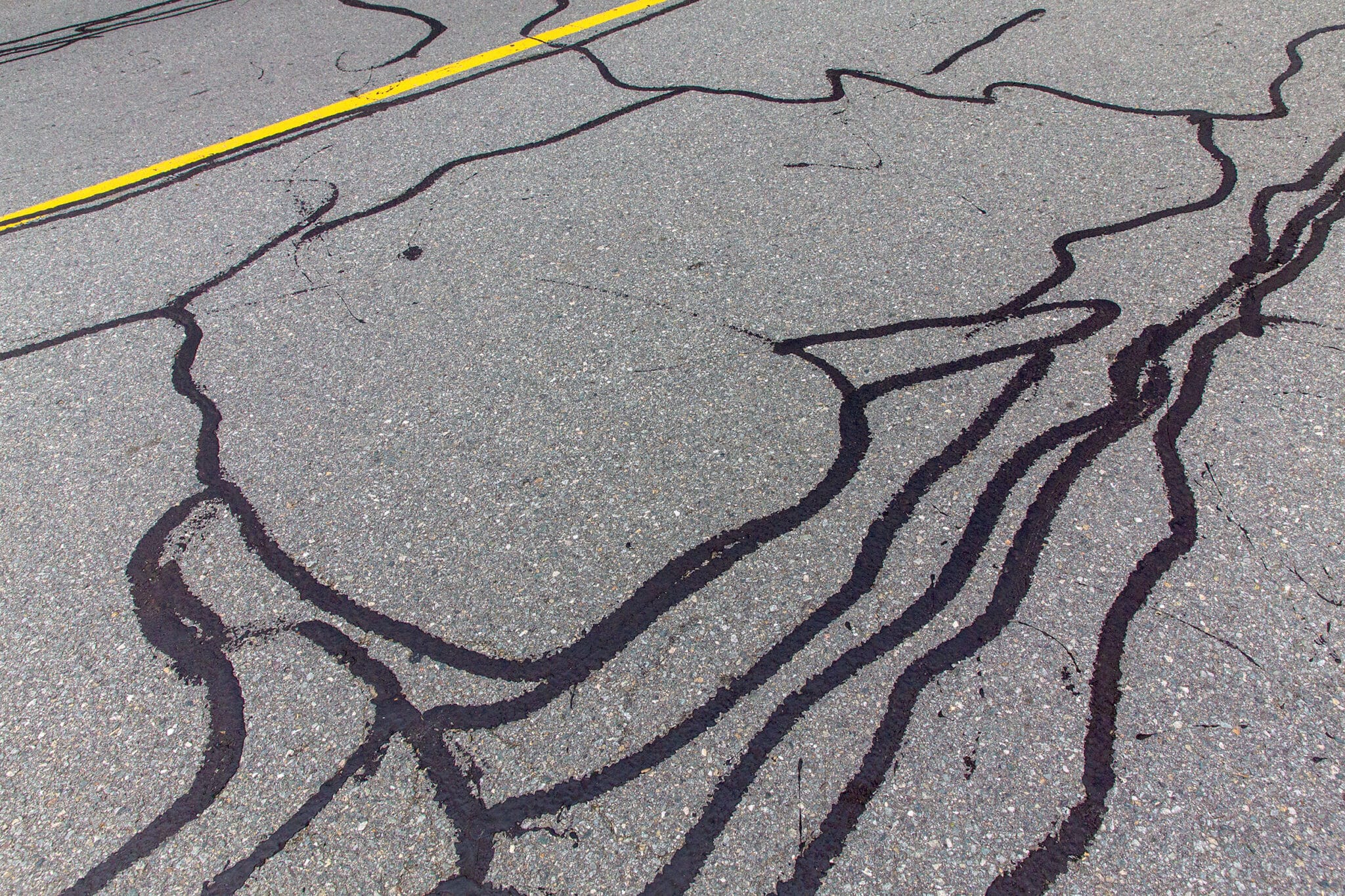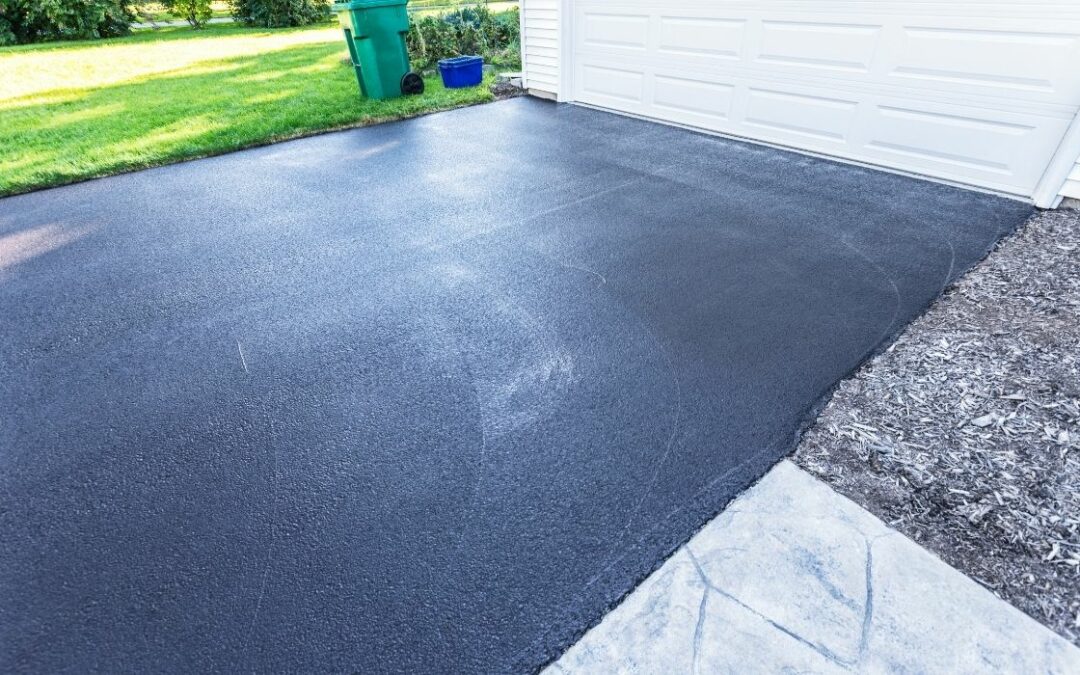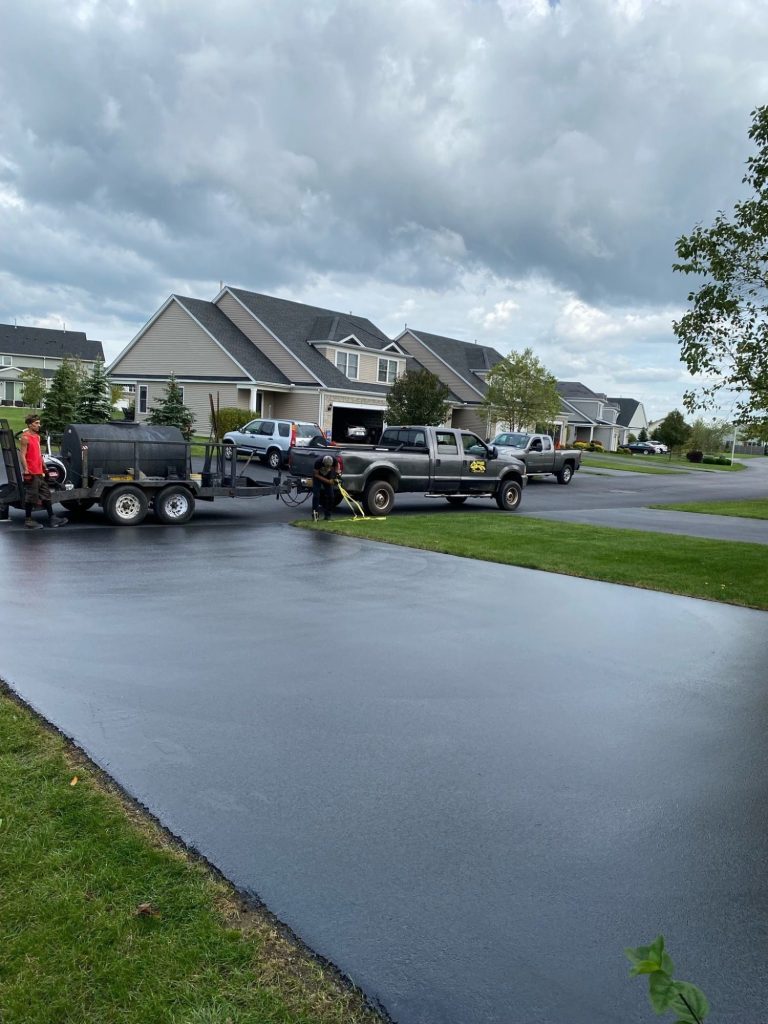Take Full Advantage Of Investment Returns: Angled Parking Area Perfection with Asphalt Sealing
Take Full Advantage Of Investment Returns: Angled Parking Area Perfection with Asphalt Sealing
Blog Article
Hot Mix Asphalt: A Sustainable Service for Pavement
Warm Mix Asphalt (HMA) has arised as a leading lasting option for sidewalk remedies, supplying a myriad of ecological advantages and innovative modern technologies. As the need for green building and construction practices expands, exploring the subtleties of HMA's sustainability can supply beneficial understandings right into the future of sidewalk services.
Environmental Benefits of Warm Mix Asphalt

In Addition, Hot Mix Asphalt assists to alleviate city warmth island results. Its dark color takes in sunlight, lowering the quantity of warm mirrored back right into the atmosphere contrasted to lighter-colored pavements. This can lower ambient temperatures in city areas, reducing the need for a/c and ultimately decreasing energy intake.
Furthermore, Warm Mix Asphalt adds to boosted stormwater management. Its permeable nature enables water to infiltrate the sidewalk and charge groundwater products, reducing runoff and the danger of flooding. These environmental benefits make Hot Mix Asphalt a lasting selection for leading freeways and roads.
Power Efficiency in HMA Production
Is energy effectiveness a critical element in the production of Hot Mix Asphalt (HMA)? Power plays a considerable role in the production of HMA, influencing both cost and ecological sustainability. One vital element of energy performance in HMA production is the use of cozy mix asphalt (WMA) technologies.
Furthermore, improvements in plant modern technologies have led to even more energy-efficient HMA manufacturing processes. By enhancing power usage in HMA manufacturing, the industry can decrease its carbon impact while keeping top quality sidewalk products.
Recyclability of Warm Mix Asphalt
The recyclability of Hot Mix Asphalt (HMA) is a pivotal aspect of its sustainability and long-lasting ecological impact. HMA is among the most recycled materials in the United States, with over 100 million lots of redeemed asphalt sidewalk (RAP) being reused annually in new sidewalk building and construction. Recycling HMA provides a number of environmental advantages, such as reducing the requirement for virgin products, lowering energy usage during manufacturing, and lowering the quantity of waste sent out to land fills.
The process of recycling HMA involves crushing the existing sidewalk, crushing it discover this into smaller pieces, and blending it with brand-new aggregate and asphalt binder to develop a recycled mix. On the whole, the recyclability of HMA plays a considerable role in promoting lasting practices within the sidewalk market.

Long-Term Performance of HMA
Asphalt sidewalks demonstrate durability and durability over an extensive period, reflecting the lasting efficiency of Hot Mix Asphalt (HMA) Furthermore, advancements in he said HMA innovation, such as the usage of polymer-modified binders and warm mix asphalt, have actually further improved the resilience and durability of HMA sidewalks. By prioritizing high quality building and construction and maintenance practices, HMA proceeds to confirm itself as a sustainable and economical solution for lasting sidewalk infrastructure.

HMA: Sturdiness and Sustainability
Demonstrating both durability and sustainability, Warm Mix Asphalt (HMA) has actually ended up being a foundation in the construction of lasting sidewalk frameworks - regrading. HMA's longevity originates from its capacity to endure heavy lots, extreme climate condition, and high traffic volumes, making it a reliable option for roadways, highways, and airport runways. The structure of HMA, which typically includes accumulations, binder, and filler, plays a vital duty in boosting its durability and resistance to tear and put on
Furthermore, HMA's sustainability exists in its recyclability and energy-efficient manufacturing procedure. The capability to reuse recovered asphalt sidewalk (RAP) in brand-new HMA mixes minimizes the need for virgin products and minimizes the environmental effect of sidewalk construction and maintenance. In addition, the power effectiveness of producing HMA depends on its lower blending temperature levels compared to other sidewalk products, bring about reduced energy consumption and greenhouse gas discharges.
Conclusion
In final thought, warm mix asphalt (HMA) supplies a lasting solution for pavement with its environmentally pleasant characteristics. HMA's recyclability, power performance in manufacturing, and long-lasting toughness make it an environmentally friendly selection for roadway building and construction.
HMA is one of the most recycled materials in the United States, with over 100 million heaps of reclaimed asphalt sidewalk (RAP) being reused yearly in new sidewalk building.The process of reusing HMA involves crushing the existing pavement, squashing it into smaller sized items, and mixing it with new accumulation and asphalt binder to produce a recycled mix.Asphalt sidewalks demonstrate toughness and resilience over an extensive period, mirroring the long-term efficiency of Hot Mix Asphalt (HMA) Furthermore, innovations in HMA technology, such as the usage of polymer-modified binders and warm mix asphalt, have actually description further improved the durability and longevity of HMA sidewalks. The capacity to recycle reclaimed asphalt pavement (RAP) in brand-new HMA mixtures minimizes the demand for virgin materials and reduces the environmental influence of sidewalk construction and maintenance.
Report this page